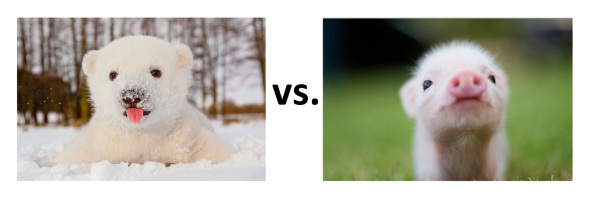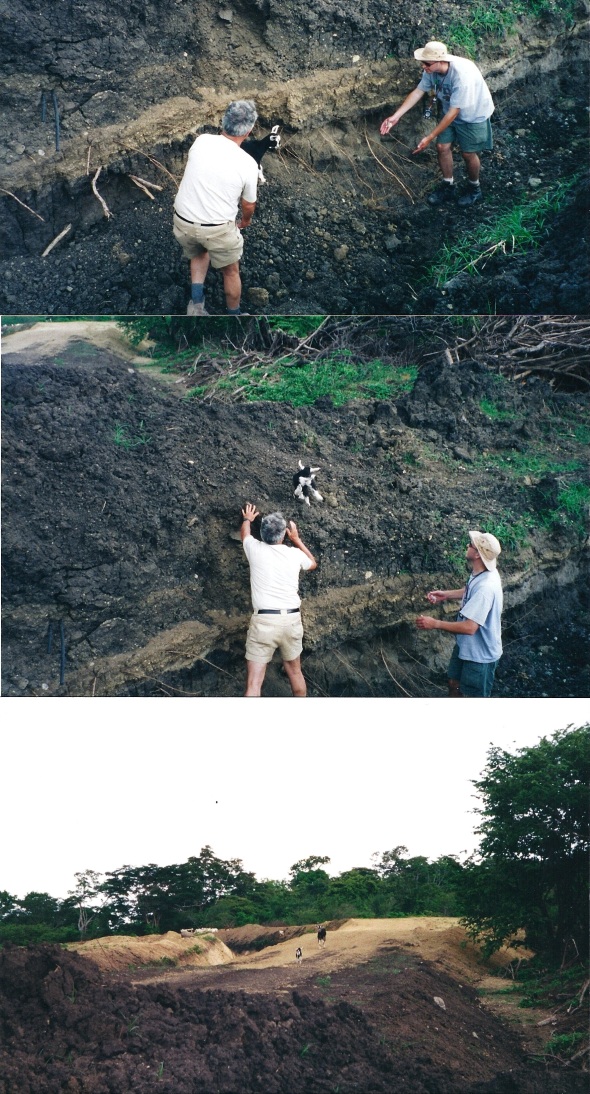Accretionary Wedge No. 47: Field Notes
Posted: June 1, 2012 Filed under: Geoscience, Squee | Tags: AW, baby goat, Costa Rica, cows, field notes, Mariana Islands, moon, Nicaragua 5 CommentsI am very happy to be hosting Accretionary Wedge this month. For the last couple of years, I’ve been a Program Director at NSF, funding research and field activities and workshops and graduate fellowships and whatever else we can afford. But before I was a Fed, I was an igneous petrologist / analytical geochemist who had to do lots of field work.
And I miss it.
A lot.
So I thought I would use AW47 to dig back through some of my field notes and photos and share them, in the hope that you’ll join in and share yours, too.
In the field, I keep two notebooks; one for documenting samples and field sites, and one for documenting the more… qualitative aspects of the trip. I could share a lot of science here, but I got completely distracted by the latter of the two books. In 2001, I was in Costa Rica (and later Nicaragua), where I enjoyed noting non-geologic things, such as cow sightings, or the fact that the moon looks different near the equator:
29 June 01: “…we encountered a herd of cows at an old quarry – the calves were very intrigued by our presence… The moon is at a different angle so near to the equator, it’s neat…”
When we got to Nicaragua, my eyes were opened to a lot of things. Poverty, major political unrest, and my first crater. It was an overwhelming trip:
[date unknown]: I was writing about how much harsher life felt there, relative to Costa Rica “…in the people’s sad eyes and in their land and homes and the way they talk to us…went to Masaya volcano, my first look at a live crater. Wow. It was degassing – big pulses of cloudy gasses kept pouring out, stinking of sulfer [sic, nice job JW] and maybe chlorine? Never in the US could we drive up to the rim of a crater. It’s incredible to see into the belly of a volcano – a window into the subsurface. Absolutely incredible. The other highlight of the day was Laguna Apoyo – a crater lake that, as legend tells it, used to house a serpent egg that hatched the dragon who joined tails with another (on Nicoya Peninsula” to shake + cause earthquakes. Saw a millipede on an outcrop. Also saw houses with bulletholes and old Sandinista propeganda [sic] all over the towns – this is a very troubled place. After the big quake in Managua a few years ago, they couldn’t even rebuild, they just put up a few new buildings elsewhere – it’s a dreary sprawl.”
At one point on this trip, we rescued a baby goat, which, if you know anything about me, was pretty much THE BEST DAY EVER:
“A long but fantastic day. Tom has perfected his monkey call. We picked + ate fresh mangoes, and collected ~ 100 samples of great ash flows. Around 3, we encountered a herd of goats, who were walking away from a mama and her baby, who was tiny and trapped in a little canal valley. Tom rescued the goatlet, and the mama + baby ran toward each other, bleating out happy and frantic hello’s. It was the greatest event yet.”
And just to prove that I also sometimes wrote about samples, here’s a page from the science notebook, with an important lesson that Erik Hauri and I learned about training for the field, while climbing up the steep slopes of various Mariana volcanoes in 2004: “Next time, less treadmill, more stairmaster.”
Wise words.
I may write again this month, digging into the science side of what it’s like to hike around the tropics in search of juvenile, olivine-bearing (hopefully melt-inclusion-containing) scoria, but for now, I invite you to tell me what it’s like for YOU in the field! Share your stories, your photos, your videos, your anything, and link to it in the comments.
Baby Animal March Squee Madness!
Posted: March 19, 2012 Filed under: Squee | Tags: baby animal, did I mention squee, madness, squee 15 CommentsAfter 4 days, 382 votes, and at least 15 arguments about how the hedgehog was robbed, I give you the 2012 March Squee Champion: PIGGEH!
The little pink bit of adorableness beat Siku the polah bear by 34 votes (27%) and joins last year’s champion, Butterstick the panda, on my Wall of Squee. Congratulations, little guy!
Thanks to everyone who voted, cheered, ridiculed, and of course SQUEEed through the last week – it was a blast. We’re already compiling competitors for next year!

Posted March 22, Round 3 summary:
Well folks, it’s come down to this:
 Representing the Western Conference, weighing in at 60 pounds, we have the hope of the Great White North: The polah bear. He enjoys snow, ice, swimming, and devouring seals. He battles our Eastern Conference champion: Piggeh. Weighing a massive 5 pounds, this tough little guy enjoys making friends with spiders, and occasionally hunting for truffles. Who will be Squee Champion?! You have until 9:00p EDT to decide!
Representing the Western Conference, weighing in at 60 pounds, we have the hope of the Great White North: The polah bear. He enjoys snow, ice, swimming, and devouring seals. He battles our Eastern Conference champion: Piggeh. Weighing a massive 5 pounds, this tough little guy enjoys making friends with spiders, and occasionally hunting for truffles. Who will be Squee Champion?! You have until 9:00p EDT to decide!
Posted March 21, Round 2 summary:
It’s March Madness time, which, for those of us who care nothing for basketball, means it’s time for the Baby Animal March Squee Madness Bracket!!! This year’s finals will happen over 4 days (a change from last year’s single-day event).







